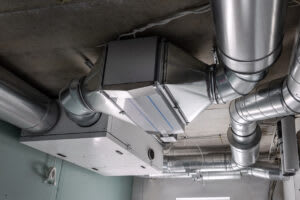 As average low temperatures may dip into the 40s on winter nights here in Arizona, the type of duct materials in your home can make a difference. The span of ductwork that distributes warm air throughout the house also impacts your comfort and costs. In winter, ductwork must retain heat effectively, minimizing loss due to conduction and leakage. Here are examples of common types of duct materials and how they get the job done.
As average low temperatures may dip into the 40s on winter nights here in Arizona, the type of duct materials in your home can make a difference. The span of ductwork that distributes warm air throughout the house also impacts your comfort and costs. In winter, ductwork must retain heat effectively, minimizing loss due to conduction and leakage. Here are examples of common types of duct materials and how they get the job done.
- Sheet metal is the most durable and long-lasting duct materials commonly installed. It’s less likely to deteriorate and leak over the span of years. The interior surface of sheet metal is also smooth, supporting maximum airflow with minimum internal friction loss compared against other ductwork materials. It’s also less likely to accumulate dust and other contaminants and easier to clean.
- Fiberboard (also known as “duct board”) is made of fiberglass strands molded and glued into rigid flat boards with a foil vapor barrier attached. Assembled into square or rectangular shapes, fiberboard can be cut and joined easily for installation. The material also deadens noise effectively. However, the rough internal surface increases airflow resistance and typically accumulates dirt and dust more rapidly.
- Flex duct is composed of a spring steel coil with a thick plastic covering to form a round and very flexible duct. Flexibility, in fact, is its principle advantage, allowing the duct to be quickly bent into shapes to accommodate difficult installation. Flex duct often deteriorates and deforms over time, leaking conditioned air and requiring replacement more quickly than rigid ducts.
How Insulation Matters
Sheet metal and fiberboard ductwork also benefit from duct insulation. Adding insulation to the exterior of ductwork reduces heat loss from system airflow in winter and heat gain during summer. Properly installed, duct insulation may reduce HVAC energy costs by between 10% and 30%. Insulating sheet metal and fiberboard ducts also helps control internal condensation, which can trigger mold growth and material deterioration.
For more information about duct materials and household comfort and efficiency, contact the professionals at Hansberger Refrigeration and Electric Company.